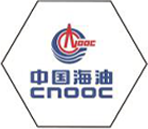
Dec . 20, 2024 21:15
Back to list
قياس الغاز
The Measurement of Gases Importance and Techniques
The study and measurement of gases play an essential role in various scientific fields, from environmental science to engineering and health care. Measuring gases involves understanding their properties, behavior, and interactions with other substances. The importance of gas measurement extends to many practical applications, including air quality monitoring, industrial processes, and climate research.
Importance of Gas Measurement
1. Environmental Monitoring The measurement of gases is vital for monitoring air quality and assessing the impacts of pollution. Gases such as carbon dioxide (CO2), sulfur dioxide (SO2), and nitrogen oxides (NOx) are significant contributors to air pollution and climate change. By measuring these gases, we can evaluate the health of our environment and implement necessary regulations to combat air pollution.
2. Industrial Applications In industrial settings, gas measurement is crucial for safety and efficiency. Many manufacturing processes release various gases that can be hazardous. Accurate gas measurements help in detecting leaks, controlling emissions, and ensuring worker safety. Furthermore, understanding gas concentrations can enhance process optimization and energy efficiency.
3. Health and Safety The measurement of gases is instrumental in the health sector, particularly in assessing indoor air quality and managing exposure to harmful gases like carbon monoxide (CO) or radon. Monitoring these gases in residential or occupational environments helps prevent health risks and promote better air quality standards.
.
Techniques for Measuring Gases
قياس الغاز

Various techniques are employed to measure gases accurately. The method chosen often depends on the specific gas being measured, the required accuracy, and the conditions under which measurements are taken.
1. Infrared Spectroscopy This method relies on the absorption of infrared light by gas molecules. Different gases absorb specific wavelengths of infrared light, allowing for accurate identification and quantification. This technique is particularly useful for measuring greenhouse gases and airborne pollutants.
2. Gas Chromatography This technique separates gases based on their chemical properties. A sample is vaporized and passed through a column that contains a stationary phase. As gases interact differently with the stationary phase, they are separated and then detected, allowing for quantification. Gas chromatography is widely used in environmental analysis and forensic science.
3. Electrochemical Sensors These devices measure gas concentrations by detecting changes in electrical current or voltage when gases interact with a sensor. They are commonly used for real-time monitoring of gases like carbon monoxide, ozone, and hydrogen sulfide in various applications, including industrial safety and environmental monitoring.
4. Mass Spectrometry This sophisticated method measures the mass-to-charge ratio of ions to identify and quantify gas molecules. It provides high sensitivity and can detect trace amounts of gases, making it invaluable in research and environmental testing.
5. Photoionization Detectors (PIDs) These instruments use ultraviolet light to ionize gas molecules. The resulting ions generate an electric current proportional to the concentration of the gas. PIDs are effective in detecting volatile organic compounds (VOCs) and other hazardous gases.
Conclusion
The measurement of gases is an indispensable aspect of modern science and industry. With the growing concerns over air quality and the impact of emissions on climate change, precise gas measurement techniques have become increasingly important. By understanding gas behavior and developing innovative measurement technologies, we can protect public health, improve environmental conditions, and advance scientific research. As technology continues to evolve, so too will our capabilities in gas measurement, paving the way for a safer and more sustainable future.
Latest news
-
Safety Valve Spring-Loaded Design Overpressure ProtectionNewsJul.25,2025
-
Precision Voltage Regulator AC5 Accuracy Grade PerformanceNewsJul.25,2025
-
Natural Gas Pressure Regulating Skid Industrial Pipeline ApplicationsNewsJul.25,2025
-
Natural Gas Filter Stainless Steel Mesh Element DesignNewsJul.25,2025
-
Gas Pressure Regulator Valve Direct-Acting Spring-Loaded DesignNewsJul.25,2025
-
Decompression Equipment Multi-Stage Heat Exchange System DesignNewsJul.25,2025

